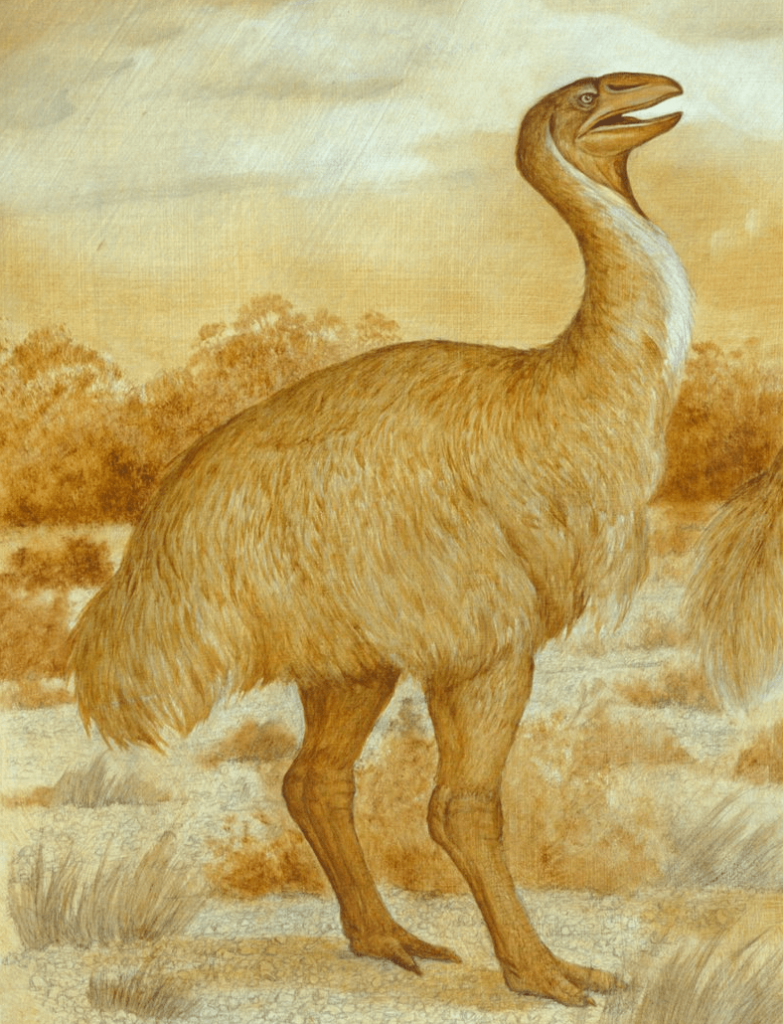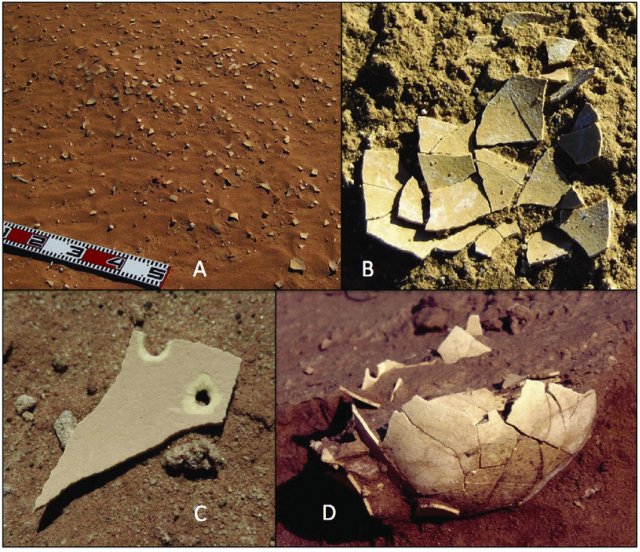The ancient humans’ feast was provided by the extinct megafauna Genyornis, a group of birds known as the dromornithids or mihirungs, also known as the “demon ducks of doom” due to their resemblance to waterfowl and massive size.
Genyornis, popularly known as “Thunder Bird,” was a two-meter (six-foot) tall creature with lengthy legs and unexpectedly stubby wings. These birds are said to have strutted across Australia in groups, and despite the fact that a six-foot demon ducks of doom is pretty terrifying, they were most likely vegetarians.
Instead, we humans were the ones performing the devouring, as evidenced by the discovery of burned bits of old eggshells few years ago. The finding of the shells, however, ignited dispute over which bird lay the eggs our forefathers ate.
What difference did it make? Because the answer could reveal whether humans were to blame for the extinction of one of the suspects: Genyornis, which was previously thought to be the egg layer.
A second extinct bird – Progura, or “giant malleefowl” – was also floated as a contender for the egg layer after research indicated that the burned shells’ shapes and thickness made it a more likely candidate than Genyornis. These birds were more comparable to a turkey, weighing around five to seven kilograms (11 to 15 pounds).
The authors of a new paper published in Proceedings of the National Academy of Sciences used fossilized egg shells to distinguish between the two, but fortunately, these ancient calcium carbonate chick cases have fared quite well over the past 50,000 years.



“Time, temperature and the chemistry of a fossil all dictate how much information we can glean,” said senior co-author Prof Matthew Collins from the University of Cambridge’s Department of Archaeology in a statement.
“Eggshells are made of mineral crystals that can tightly trap some proteins, preserving this biological data in the harshest of environments – potentially for millions of years.”
While there was no genetic material on the shells to work with, the researchers were able to extract proteins from the ancient eggshells and compare them to those of living species. This comparison revealed that whoever laid the eggs evolved before Progura emerged, pointing to Genyornis instead.
As for how our ancestors may have tipped the species over the edge and into extinction, it seems thievery rather than butchery was likely to blame.
“There is no evidence of Genyornis butchery in the archaeological record. However, eggshell fragments with unique burn patterns consistent with human activity have been found at different places across the continent,” said senior co-author Prof Gifford Miller from the University of Colorado.
“This implies that the first humans did not necessarily hunt these enormous birds, but did routinely raid nests and steal their giant eggs for food. Overexploitation of the eggs by humans may well have contributed to Genyornis extinction.”
Cover photo by G. Miller
